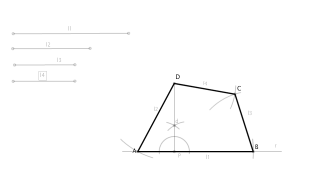


Fred Holloway is vice president of production and winemaking. Many of the best wine vine growing regions benefit from this contrast between hot days and cold nights. The heat ripens grapes and accents vivid fruits, while the cool preserves acidity. Paso Robles as a whole benefits from extreme diurnal shifts-100 degree days plunge, at times, to 50 degree nights. Their vineyards benefit from the influence of the Pacific Ocean, just eight miles away. Justification is a cab franc-merlot blend. Isosclese is a cab-merlot-cab franc blend. Isoscleses-the wine in this vertical-and Justification. They concentrate on two Bordeaux-style wines.

Initially they were only grape growers, but in 1987 they ventured forth and bottled their first wines under the Justin label. Justin and Deborah Baldwin purchased their estate in 1981 and planted 72 acres in wine vines. $76-80 Justin Isosceles, Paso Robles 2018 That reinforces my recommendation to decant and/or lay it down for a couple of years. Since there were three bottles, this was tasted again on the second day, and it really came around as round and delicious after a day of being open. A bit raw and ungainly at this stage, decanting recommended or let it age. Blend of 83% cabernet sauvignon, 9% merlot, 8% cabernet franc. Dry as the youngest wine, the boldest and least integrated of the vertical tasting. Justin Isosceles, Paso Robles 2018: Deep ruby color cherry, raspberry, redcurrant on the nose black cherry, black and red currant, raspberry, blackberry, oak on the palate. The milky, creamy elements of the cheese superbly complemented this wine. With the higher tannins, this really benefitted when paired with the delicious cheeses. Oak, vanilla, chocolate from time with oak barrels. Blend of 83% cabernet sauvignon, 9% cabernet franc, 8% merlot. Dry bold tannic, but not extravagantly so. Justin Isosceles, Paso Robles 2017: Deep ruby color cherry, raspberry, redcurrant on the nose black cherry, blackberry, black and currant, raspberry, plum, oak on the palate.

After five years of bottle age, this is smoother and softer than the succeeding two vintages, although all are high quality, rich, Paso Robles fruit-forward efforts. Blend of 85% cabernet sauvignon, 8% cabernet franc, 7% merlot. Justin Isosceles, Paso Robles 2016: Deep ruby color black cherry, raspberry, redcurrant on the nose black cherry, black and currant, blackberry, raspberry, oak on the palate. That is the story for another day and not for a wine blog, but we endured three days of no power and no water and I know we can do better. Welcome also to the fragility of Texas’s insistence on not being part of the national grid for power. Sadly, I was not able to participate in the live Zoom online tasting because, in Texas, we had no power, no water, and temperatures near zero when the virtual tasting was held. The tasting underscored the differences in vintage-notably climate-but also likely the effect of bottle age. Fast summary: all three wines were similarly excellent, rich, and tracked with similar profiles. In addition, Justin provided four cheeses-Vella Mezzo Secco Monterey Jack, Fiscalini Farmstead Old World Cheddar, igourmet Barely Buzzed cow’s milk cheese, igourmet Marieke Age Raw Milk Gouda. The wine was Justin’s flagship red, Isosceles, vintages 2016, 2017, 2018 Recently, Justin Vineyard & Winery organized a vertical tasting-tasting various vintages of the same wine. The Indo-European etymon is also conventionally compared with Latin scelus "misfortune resulting from the ill will of the gods, curse, wicked or accursed act, crime, villainy," a neuter s-stem that appears to match exactly Greek skélos, though if "crime" is secondarily developed from a sense "misfortune," with religious connotations, a connection with crookedness is less likely.This is different wine review than I have attempted before. Borrowed from Late Latin isoscelēs, borrowed from Greek isoskelḗs "having equal legs, (of a triangle) having two equal sides, (of numbers) divisible into equal parts, even," from iso- iso- + -skelēs, adjective derivative of skélos (neuter s-stem) "leg," going back to an Indo-European base *skel- "bent," whence also Armenian šeł "slanting, crooked" with o-grade, Greek skoliós "bent, crooked, askew, devious" perhaps with a velar extension Germanic *skelga-/*skelha-, whence Old English sceolh "oblique, wry," Old Frisian skilich "squinting," Old High German skelah "crooked, oblique," Old Icelandic skjalgr "wry, oblique"


 0 kommentar(er)
0 kommentar(er)
